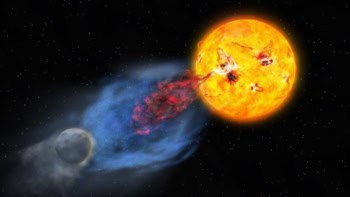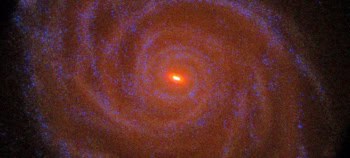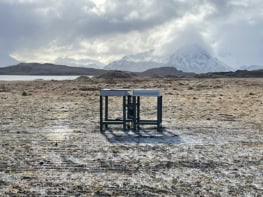
Two previously unseen molecules have been detected within the remnant of supernova 1987A. Using the Atacama Large Millimeter/submillimeter Array (ALMA), Mikako Matsuura from Cardiff University in the UK and colleagues have found formylium (HCO+) and sulphur monoxide (SO) alongside previously detected compounds such as carbon monoxide (CO) and silicon oxide (SiO).
Supernova 1987A (SN 1987A) is located 163,000 light-years away and its dramatic explosion was witnessed, as the name suggests, in 1987. Observations over the following 30 years have revealed details about how stars die and how their atoms – such as carbon, oxygen and nitrogen – spread into space.
In the past, scientists believed the molecules and dust present within a star would be destroyed during a supernova explosion. However, observations of molecules in SN 1987A suggest otherwise, and the current study, presented in Monthly Notices of the Royal Astronomical Society, further supports an alternative fate.
Dust factory
“Our results have shown that as the leftover gas from a supernova begins to cool down to below –200 °C, the many heavy elements that are synthesised can begin to harbour rich molecules, creating a dust factory,” explains Matsuura. “What is most surprising is that this factory of rich molecules is usually found in conditions where stars are born. The deaths of massive stars may therefore lead to the birth of a new generation.”
The international team has also published an accompanying study in The Astrophysical Journal Letters. In this work they used ALMA data to build detailed 3D maps of CO and SiO inside SN 1987A. These show vast stores of the molecules in discrete clumps within remnant core. The new data will help astronomers test and improve their simulations of supernova evolution.



